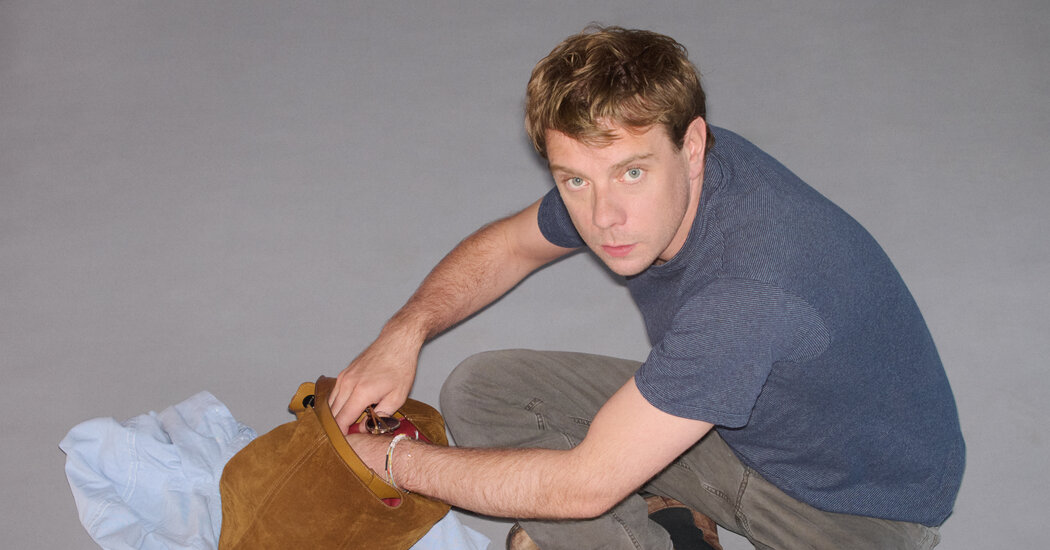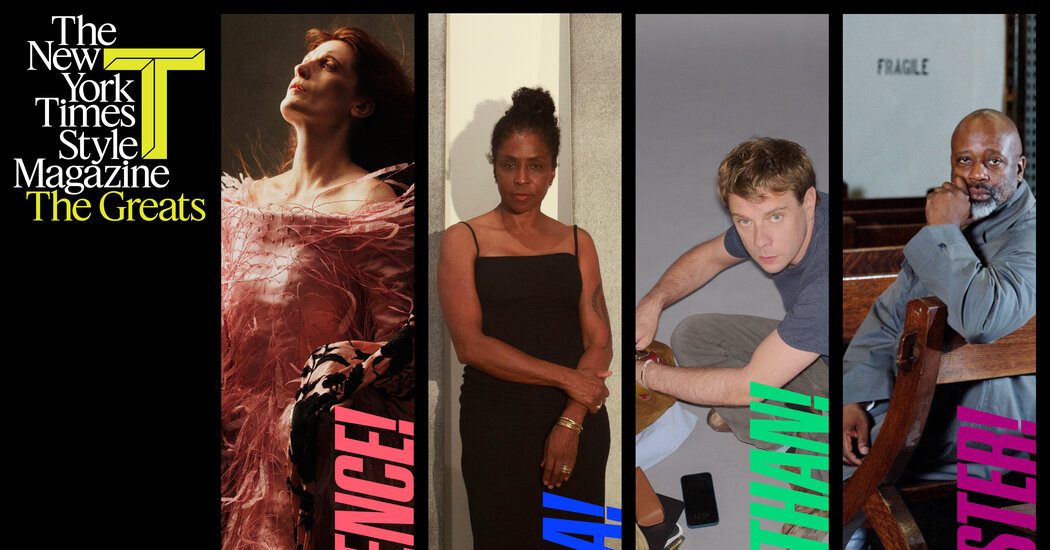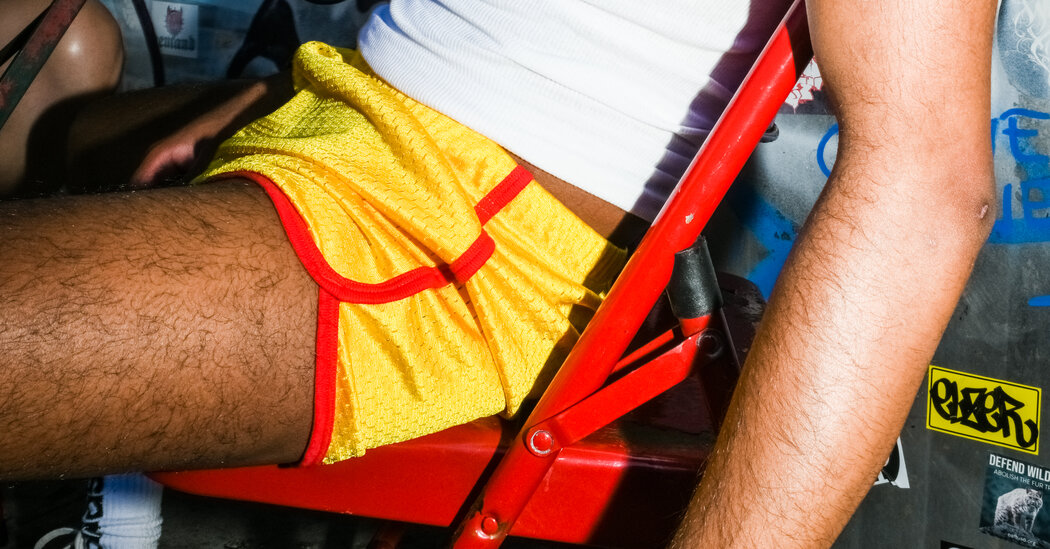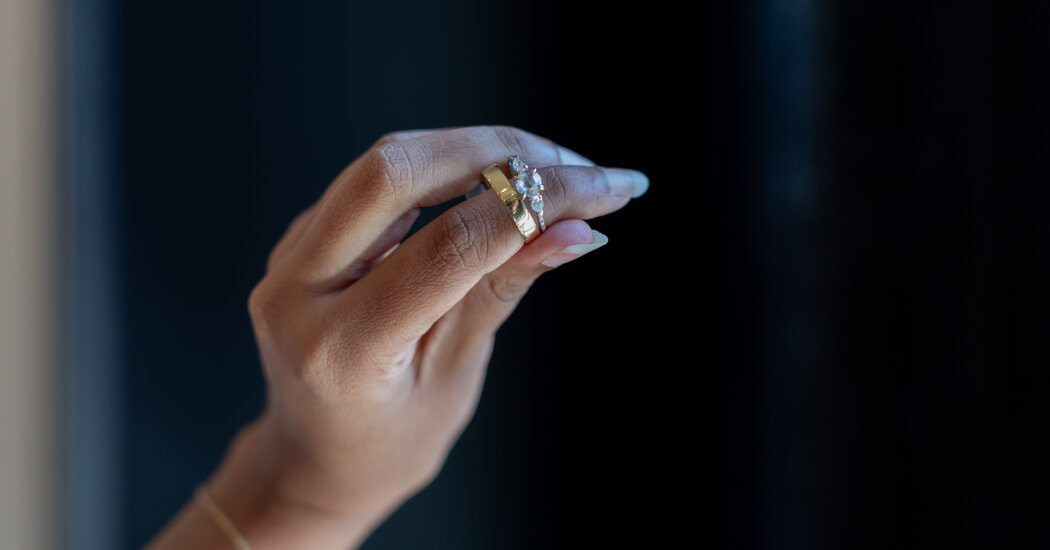Nestled beneath a pale pink rose is a ring of purple sapphires and garnets, surrounded by blue and leaf-green diamonds; half-hidden in the moss beside a purple clover, is a pair of diamond daisy earrings, with centers of dark blue tsavorite.
Like a walk in an enchanted garden, this is how you might discover the handcrafted jewels of the Portuguese house Rosior.
Run by the brother-and-sister team of José and Graça Rosas, Rosior does not advertise, and its one-of-a-kind bijoux cannot be found in stores (beyond its own small boutiques, one in Lisbon and one in Porto).
Rather, its jewelry — known for exuberant color, exacting execution and innovative design — can be found within its gardenlike displays at premier art-and-design fairs in New York City, the nearby Hamptons and Palm Beach, Fla.; on online platforms such as its own website or 1stdibs; or by appointment at the atelier in Porto. (“So you won’t find us at the Oscars,” José, 39, Rosior’s director of sales, joked during a recent video interview).
And, of course, it appears on the arms, necks and hands of loyal collectors, including Fernanda Arrepia, an art collector in Porto whose Rosior cache includes a bracelet that replicates a sunset photo her husband once took on a southern European holiday. Pink, blue, yellow and orange sapphires and yellow and white diamonds depict a golden sun descending over an ocean of blue sapphires, blue and white diamonds and emeralds — a pointillist painting comprising nearly 43 carats of gems. The cuff was created in 19.2-karat gold, the quality considered standard in Portugal, by Manuel Rosas, José and Graça’s father.
Descended from a long line of jewelers and goldsmiths, Mr. Rosas established Rosior in 1978 to create jewels for houses such as Tiffany & Company, Saks Fifth Avenue, Fortunoff and Zales. But by the mid-1980s, he had started his own collection, working his designs out in plasticene, a puttylike modeling material, rather than using molds or, more recently, computer programs, the standard practices. He then would add gems directly to the clay to see the effect.
“It was a unique process,” explained Rui Galopim de Carvalho, a gemologist and the author of a book about Rosior and its founder that is nearing publication. “He would stay in front of his plasticine, thinking how to put into a 3-D shape what was in his idea. He was a character.”
Because Manuel had no formal training, he collaborated directly with the goldsmiths to communicate his vision. Graça, 35, now the house’s designer and creative director, said that her father often referred to himself as a “painter without arms.”
The Appeal of Exclusivity
Now, two goldsmiths and five stone-setters produce each Rosior piece entirely by hand in its 50-square-meter (540-square-foot) atelier in Porto, creating fewer than 150 jewels a year. “The piece is drilled by a person. The gems are set by a person,” José said. “We have a motor that helps with the polishing, but otherwise the whole process is done by a jeweler.”
The handmade process is integral to the house’s designs, the siblings said, each of which is one of a kind. The workshop did once remake something that had been lost or stolen, José allowed, “but even then, because it is handmade, it is not the same.”
For avid collectors such as Ms. Arrepia, that is part of the appeal. “The big jewelry makers, like Van Cleef or Cartier, have their own style, and are frequently elegant; but from Rosior, you get pieces that you will not see on anybody else, wherever you are,” she wrote in an email.
José joined his father in 2006, working on the business side through Manuel’s death from cancer in 2020. Graça, however, initially earned a Ph.D. degree and pursued a career in stem cell research. But her father’s cancer diagnosis in 2018, she recalled in a recent email, “completely altered the course of my life, as well as my sense of purpose.”
In designing jewelry, she rediscovered a childhood passion long since forgotten. (A recent puzzlelike bracelet, for instance, was based on a drawing she made as a young girl.)
Like her father, Graça works exclusively in platinum and 19.2 karat gold and uses sustainably sourced stones wherever possible. And much like her father, she works out her designs in plasticine or by doing simple sketches, collaborating with the house’s artisans to accommodate the realities and limitations of gem- and metalwork or to solve particular challenges.
More Color, More Volume
A joyous use of color is a Rosior signature, Mr. Galopim de Carvalho said. In Manuel’s work, “his focus was the retinal value of the color, light return, faceting, the artistic impact and emotion behind a jewel.”
Graça’s designs reflect that legacy, though “she is more colorful than her father,” he said. “And the volumes, the shapes, there is something unique about what she is doing.”
Her “farm ring,” inspired by a client’s coffee plantation, is an example. The farmhouse of colored sapphires and diamonds, diamond sheep, ruby-and-emerald trees and other elements were individually designed, crafted and then screwed into the emerald grass that covered the ring’s flat surface, spilling down the sides.
Flora and fauna also are a frequent theme, such as a bird-of-paradise brooch in diamonds, sapphires, rubies, emeralds and tsavorites (24,900 euros, or $27,080) and a floral cocktail ring in sapphires, emeralds, rubies and tsavorites (€22,300).
But other designs are less complex, often based on simple geometric figures and lines, including a hand-chiseled gold cuff bracelet (sold, at €15,910) and rose earrings in a lacelike openwork design, set with brown diamonds (sold, price on application).
Many of Graça’s jewels have a more youthful feel than their father’s had, José noted. “My sister has a fresh way of creating that gives new ideas to the design,” he said.
As for the business, some changes also are in the works: The Rosas plan to bring new jewelers into the fold and have begun looking for a larger atelier space in Porto. “You are always seeing a new road ahead,” José said. “You still have something new tomorrow. If you are passionate about this, it’s the best way.”







